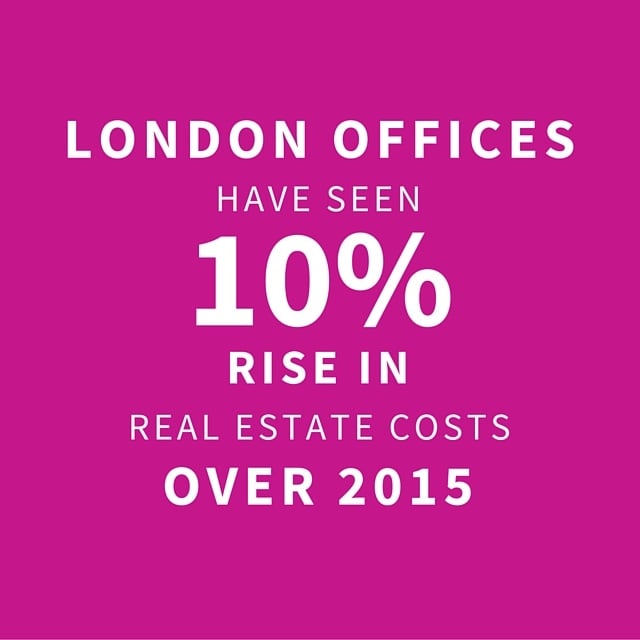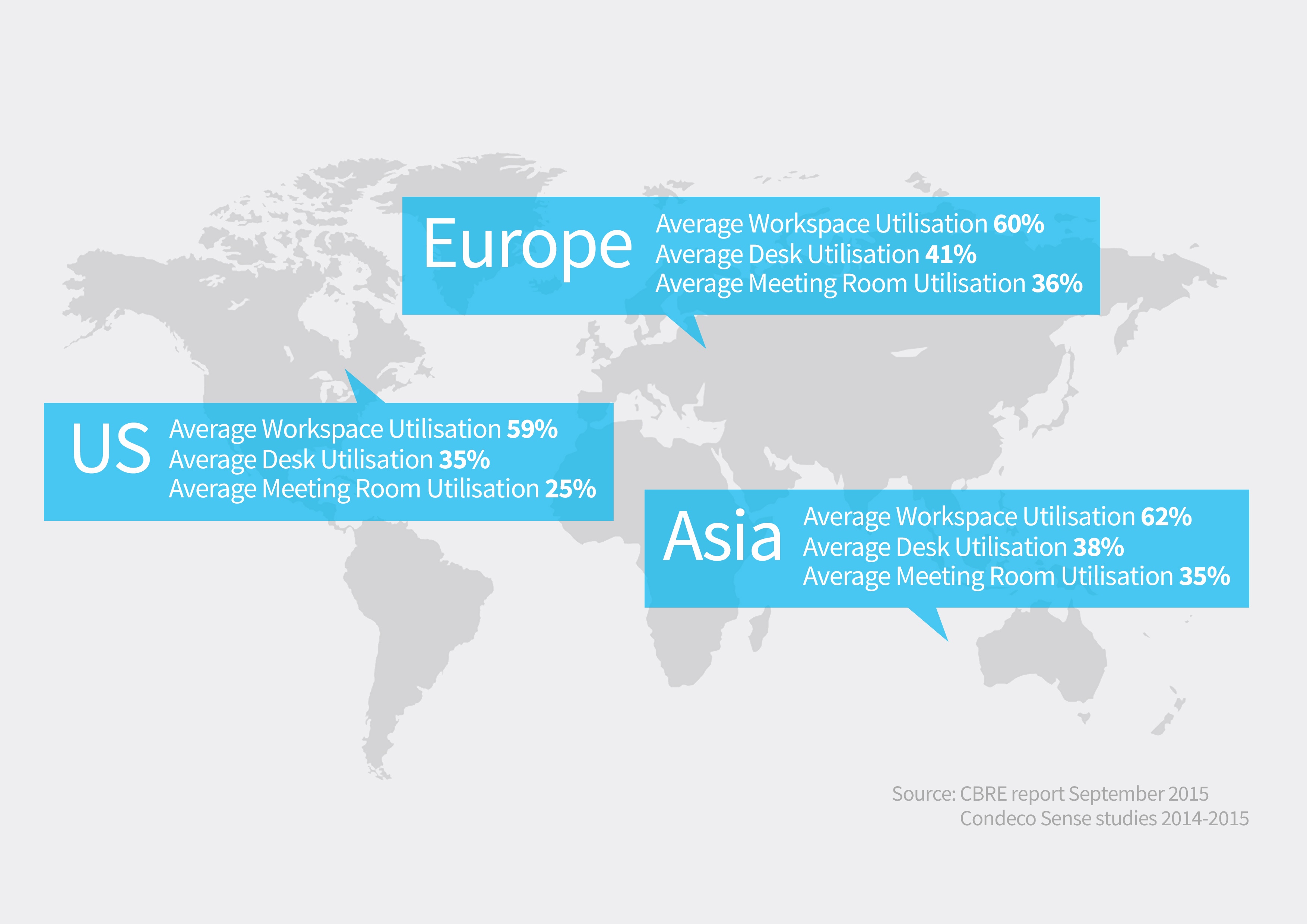Place – Creating the right home
Before opening new buildings and forking out hefty investments for extra meeting rooms and desk space, business leaders should be asking if there are smarter ways to use their existing property.
Real estate rises
For most organisations, real estate is the second largest expense on their balance sheet behind its people. This means there is a great incentive for the company to manage its corporate real estate in the most cost-effective way and use the workspace to leverage the effectiveness of its most valuable asset; people.
Read part 3 after this: ” The Smart Way to use your Workplace: Performance.”
 Central London offices have seen a 10 per cent rise in real estate costs over 2015. This increase takes the cost of office space in London to pre-crisis highs, up to a record £66.50 per square foot. Yet despite this vast increase, some companies based in London are still expanding their floor space – an increasingly risky strategy.
Central London offices have seen a 10 per cent rise in real estate costs over 2015. This increase takes the cost of office space in London to pre-crisis highs, up to a record £66.50 per square foot. Yet despite this vast increase, some companies based in London are still expanding their floor space – an increasingly risky strategy.
Different people need different spaces
Short-sighted business leaders may believe the quickest way to decrease their property costs is by reducing the amount of space allocated per person. But this approach will only hinder your productivity and talent. Different people need different spaces and equipment. By simply squeezing more people in or taking away people’s “breathing/ thinking” space, businesses will only achieve a dissatisfied, unmotivated culture. CBRE believes that going below 60 sq. ft. per desk is a productivity danger zone and this will greatly effect a company’s performance and retention rates.
Embracing flexible or collaborative working is an effective way to drive down the cost per sq. ft., but before a business reconfigures any space, they should measure what existing workspace the business is utilising.

Average utilisation figures across the world recorded by CBRE and Condeco Sense studies
Real estate directors should consider five different types of physical workspace for their people before starting to design a flexible workplace:
Fixed desks – People that largely work from their desk in the office. These workstations are usually assigned to individuals and placed within teams to enable these people to collaborate easily.
Hot desks – Bookable spaces for people that come and go. These people mainly work remotely and don’t require a huge amount of equipment or workspace to be productive in the office.
Quiet zones – Spaces for people that need to concentrate or work privately.
Meeting rooms – Bookable rooms for confidential and formal meetings.
Collaborative spaces –Team meeting and joint project spaces. These need to be comfortable brainstorming areas where people can host group discussions.
Once a business has created workspaces that their people need, productivity will inevitably rise. Employee attraction and retention figures will also be positively impacted by designing places that people quite simply want to work.
 In this complex new world leaders must ensure they offer the right resources and technology that people need to work efficiently. When people are able to choose systems and hardware that they are comfortable with, they are happier and work more productively. People may also be used to BYOD (bring your own device) practices, which enables them to use their own devices inside and outside of work. This reduces resource costs and simultaneously lends itself to a flexible working culture.
In this complex new world leaders must ensure they offer the right resources and technology that people need to work efficiently. When people are able to choose systems and hardware that they are comfortable with, they are happier and work more productively. People may also be used to BYOD (bring your own device) practices, which enables them to use their own devices inside and outside of work. This reduces resource costs and simultaneously lends itself to a flexible working culture.
Weisure
 “Weisure,” a term that reflects the intermingling worlds of work and leisure, also depicts a need for more flexible workplaces and cultures. Work no longer has to cease when a person leaves the office thanks to technological innovations. A rising number of people choose to work during their leisure time as well. Smartphones and cloud infrastructures allow people to access files and emails remotely, so office hours have become more agile and blurred.
“Weisure,” a term that reflects the intermingling worlds of work and leisure, also depicts a need for more flexible workplaces and cultures. Work no longer has to cease when a person leaves the office thanks to technological innovations. A rising number of people choose to work during their leisure time as well. Smartphones and cloud infrastructures allow people to access files and emails remotely, so office hours have become more agile and blurred.
All of these factors are contributing to a need for more flexibility in the workplace. But how does a company keep track of a flexible workforce? Utilisation figures can help indicate how much space a business’s people need and whether the real estate is efficient, however the most key measurable should be performance.
Sources
- CBRE Workplace Strategy – Research Report (2015) ‘Space utilisation: The next frontier’
- http://www.motherjones.com//documents/1148838-always-on-never-done